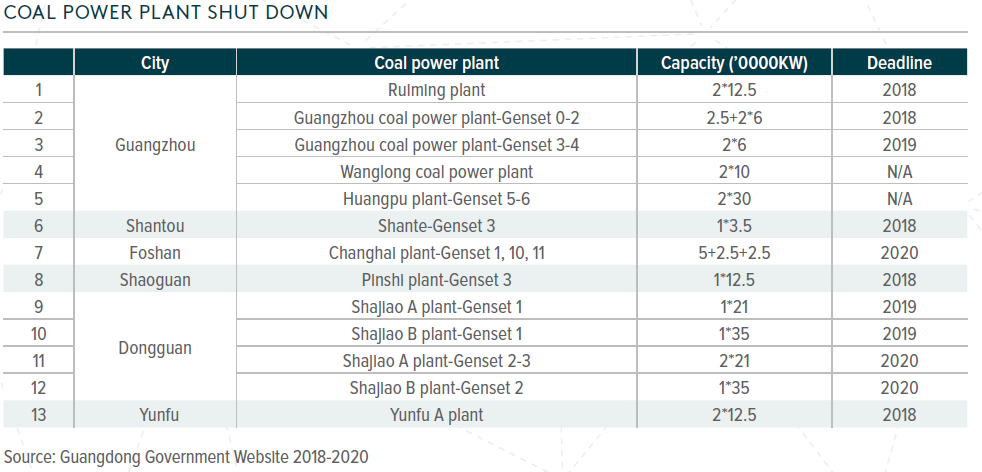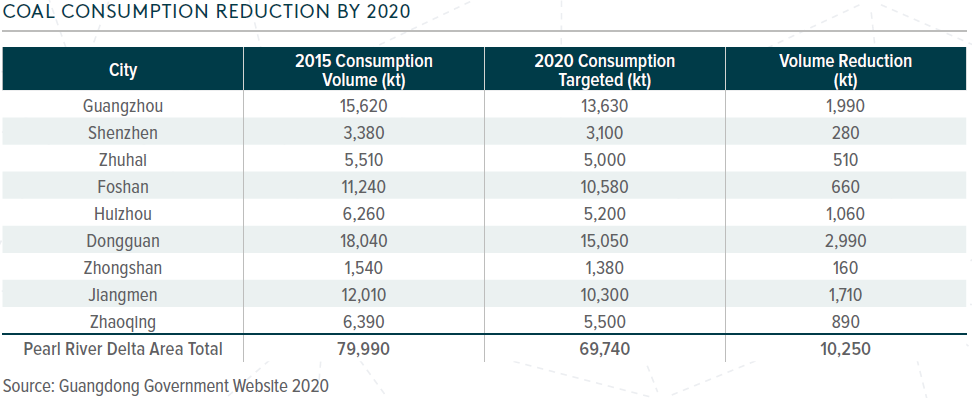Guangdong to Close Coal Power Plants
China Clean Energy ETF: Guangdong province’s aggressive plan to shut down coal power plants
Guangdong province issued the draft guidelines of the 2018-2020 Three-year Action Plan for Wining the Blue-Sky War (the 2020 Action Plan) in July 2018; almost immediately following the policy initiatives by China Ministry of Ecology and Environment. Guangdong has called in the plan for a ban on new industrial capacity for a range of businesses in the Pearl River Delta Region. Industries targeted include coal-fired power generation, steel, petroleum, petrochemicals, glass, ceramics, and non-ferrous metal smelting.
Specifically in the area of coal power generation, the province will build no more new coal-fired power plant site from here on, and the 2020 Action Plan explicitly requires the following: the province is to strictly limit the production capacity in pollution-intensive and emission-intensive industries; to firmly close coal-fired power units that are at a capacity under 300MW and do not meet the environment, energy and/or safety standards; to press earlier retirements of long-serving coal-fired generating units. Guangdong Provincial Development and Reform Commission (GPDRC) needs to coordinate with State-owned Assets Supervision and Administration Commission (SASAC) of Guangdong province and Guangdong Energy Group to decommission a number of coal-fired power generating units at a total capacity of 3,155,000KW by the end of 2020, which accounts for 3.7% of all the current coal-fired power capacity in Guangdong in 2019. This may help reduce use of coal with a targeted cap of the percentage of coal in the primary energy consumption at 37%. According to the plan, the total consumption of coal needs to be below 165 million tons all over the province by 2020 and below 70 million tons in Pearl River Delta area or 10,250 kt less than the 2015 level that expects to be 3% of the total in Guangdong in 2020.
However, there will be upcoming challenges to achieve these goals. For example, about one-third of electricity demand in Guangdong is supplied through the West-East Electricity Transmission Project, where the electricity is produced in western provinces such as Guizhou and Yunnan, and transmitted to Guangdong for end users. Therefore, the closures of coal power plants will involve such considerations as power supply security and cost hikes. In the Action Plan, the province will accordingly increase the transmission to 40 million KW by 2020, which is almost twice that of the current level. Meanwhile, more clean energy projects will be introduced as well. Four more hydro power plants will be built in Shenzhen, Meizhou, Yangjiang and Qingyuan. The capacity for nuclear, wind and solar power expects to achieve 16 million KW, 6.5 million KW and 5 million KW by 2020, respectively.



